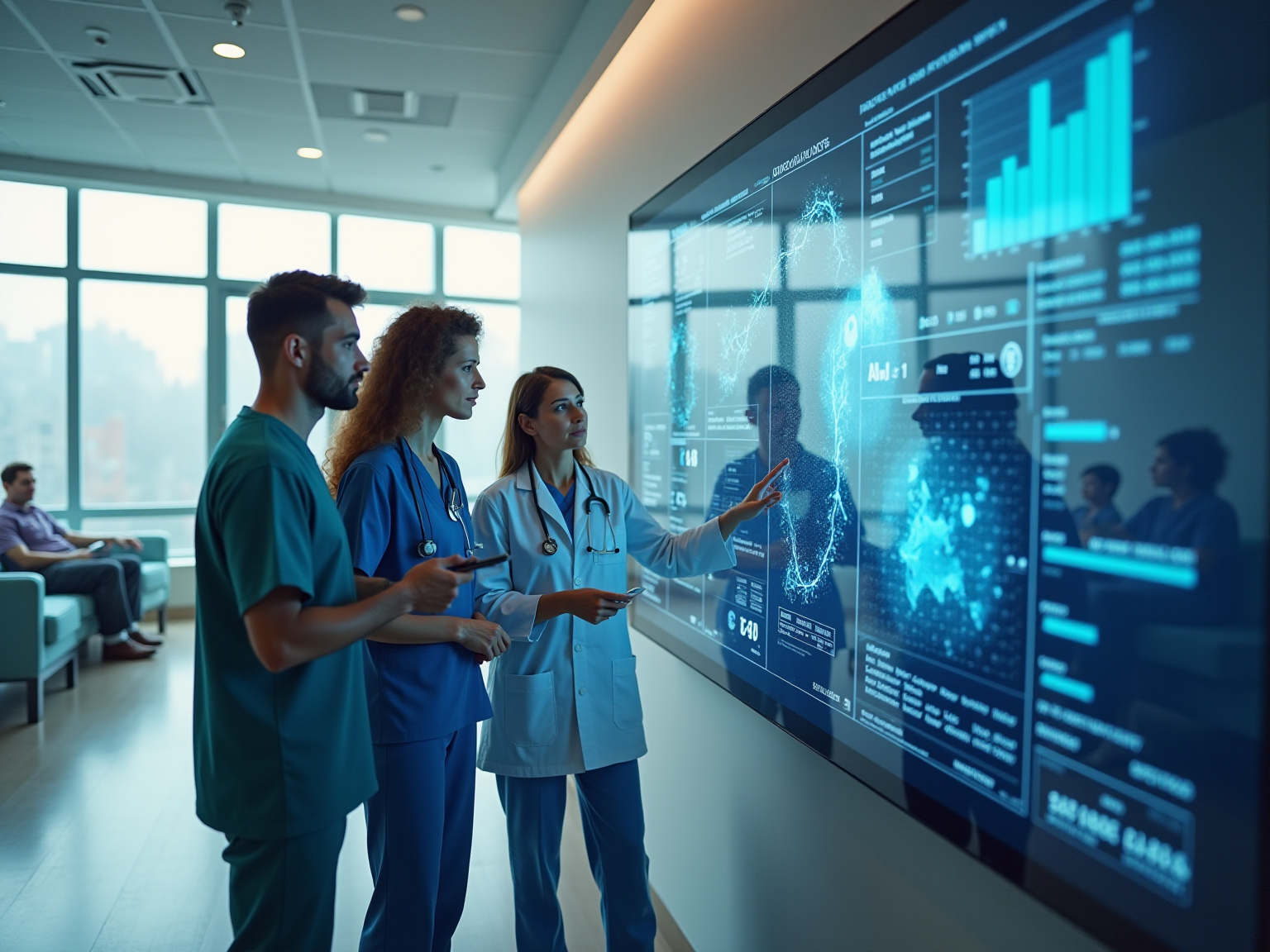Overview
At the forefront of modern healthcare is the pressing need to enhance IT infrastructure. In our article, “7 Strategies for Improving IT Infrastructure in Healthcare,” we outline effective methods to revolutionize healthcare IT systems. We recognize that strategies such as:
- Hybrid integration
- Cloud solutions
- Regulatory compliance
are not just beneficial; they are essential for streamlining operations, improving patient care, and safeguarding sensitive information. By addressing these critical components, we can meet the urgent demand for a modernized IT infrastructure in the healthcare sector. Join us in exploring these strategies and take decisive action towards transforming your healthcare IT landscape.
Introduction
In the rapidly evolving landscape of healthcare, we recognize that the integration of advanced technologies is not merely a luxury but an essential requirement. As patient data becomes increasingly complex and the need for streamlined communication intensifies, we see organizations gravitating towards innovative solutions like our hybrid integration platform. This powerful tool not only connects disparate systems but also enhances data accessibility, ultimately leading to improved patient outcomes.
As the healthcare sector grapples with challenges such as interoperability and cybersecurity threats, we believe that adopting robust integration strategies is critical. From real-time monitoring to coordinated care programs, the future of healthcare hinges on our ability to efficiently manage and utilize data while safeguarding sensitive information.
We invite you to explore the transformative impact of these technologies with us, as we highlight how they are reshaping patient care and operational efficiency in healthcare organizations today.
Avato: Enhancing Patient Care Through Secure Hybrid Integration
At Avato, we recognize that the integration of disparate systems and data sources is crucial for enhancing IT infrastructure in healthcare for medical organizations striving for efficiency. Our hybrid integration platform empowers medical providers to connect seamlessly, facilitating real-time data exchange and monitoring. This capability allows them to access extensive individual information, which is essential for informed decision-making and improved outcomes. eClinicalWorks exemplifies this trend, offering EHR solutions to over 850,000 medical professionals, underscoring the significance of integration in our field.
Furthermore, we prioritize security within our IT infrastructure in healthcare; our platform safeguards sensitive client information, addressing a critical concern in medical IT today. As Michael Nolan articulates, “Our commitment to adopting these advanced systems reflects a dedication to improving medical service delivery, ensuring compliance, and safeguarding individual information in an increasingly interconnected world.” By optimizing workflows and enhancing communication, we significantly elevate the overall experience, ensuring that medical professionals have timely and precise information at their fingertips.
Surveys indicate that medical leaders recognize the importance of addressing interoperability and information standards to fully leverage IT infrastructure in healthcare. This highlights the value of our solutions in the evolving medical landscape. Notably, North America emerged as the largest region in the medical information integration market in 2024, demonstrating the growing demand for efficient integration solutions.
At Avato, we are committed to designing technology foundations that enable medical entities to enhance and prolong the value of their legacy systems while streamlining complex integrations. This approach not only reduces costs but also provides real-time notifications on system performance. We invite you to partner with us in transforming your integration capabilities for the future of patient care.

Oracle Healthcare Cloud: Streamlining Data Management for Improved Patient Outcomes
In today’s rapidly evolving medical landscape, effective handling of large amounts of information is not just beneficial; it is essential. Our hybrid integration platform at Avato offers a robust solution that empowers medical institutions to protect their information while ensuring it remains easily accessible to authorized staff. This streamlined approach to information management not only boosts operational efficiency but also significantly enhances patient care by enabling providers to make informed decisions swiftly.
With support for 12 levels of interface maturity, we enable entities to access critical information and systems in weeks, not months. This agility ensures that organizations can adapt to changing information needs without incurring substantial infrastructure expenses. As the IT infrastructure in healthcare is projected to expand at a CAGR of 19.8% from 2022 to 2027, the scalability of cloud solutions becomes increasingly vital for improving information accessibility and user outcomes.
By adopting our cloud solutions, organizations can anticipate enhanced care for patients through improved information management methods, ultimately leading to more efficient service delivery. Furthermore, our integration of advanced technologies addresses interoperability issues by automating processes, thereby reducing reliance on manual interventions. This underscores the significance of Avato’s hybrid integration platform in addressing the challenges of managing information through IT infrastructure in healthcare.
We invite you to leverage Avato’s capabilities to sustain a competitive advantage in your sector while improving patient outcomes through innovative information management solutions. What’s holding your team back from achieving this level of efficiency and care?
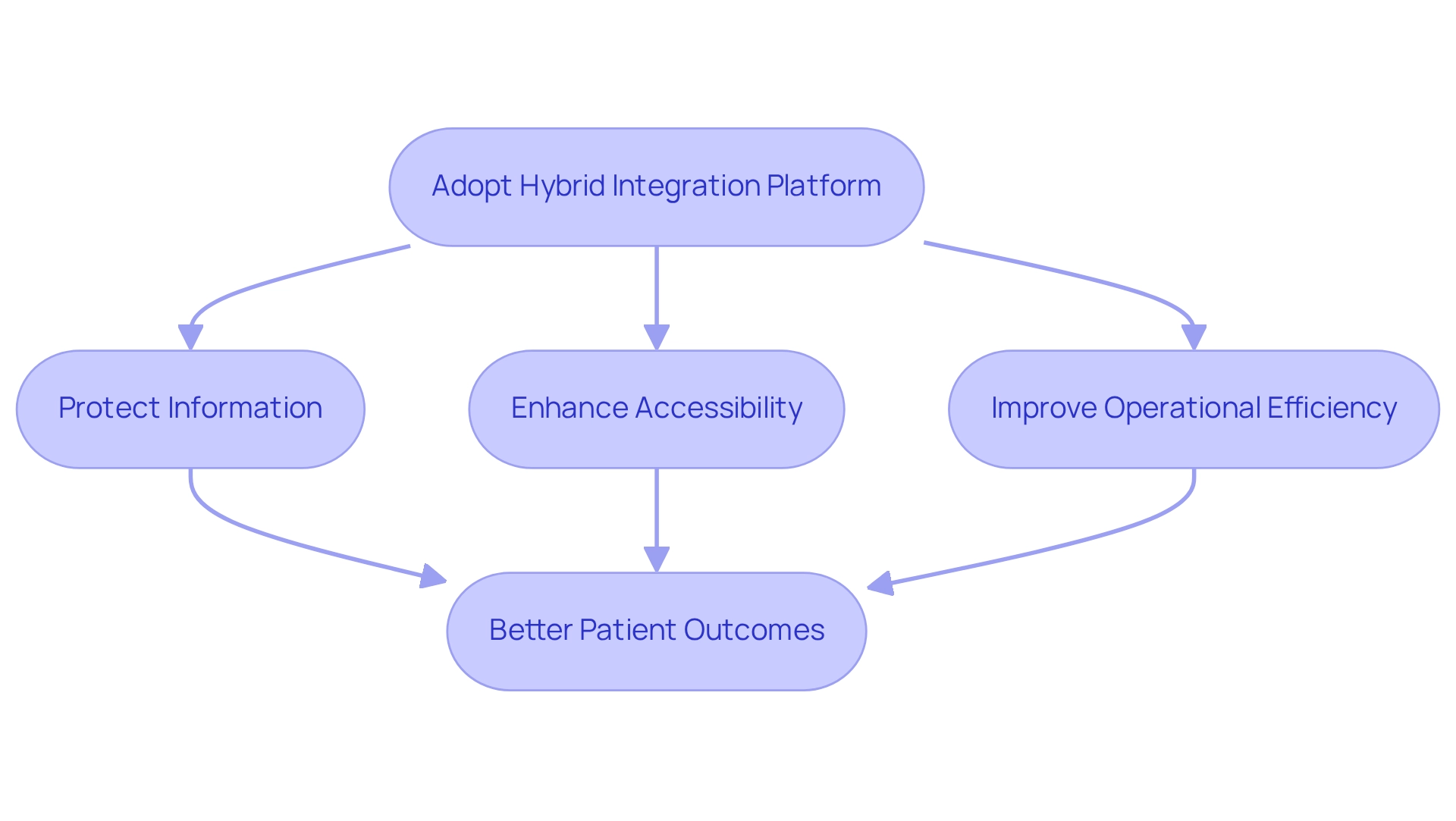
Sangfor’s Hyper-Converged Infrastructure: Revolutionizing Healthcare IT Efficiency
At Avato, we recognize the critical need for seamless integration in today’s medical landscape. Our hybrid integration platform unifies computing, storage, and networking into a cohesive system, significantly simplifying management and reducing operational costs. In the medical field, this integration empowers IT departments to allocate resources more efficiently, ensuring that essential applications operate without interruption. Our solutions not only enhance data accessibility but also fortify security measures, which are paramount for adhering to stringent medical regulations. By streamlining IT infrastructure in healthcare, medical organizations can refocus their efforts on patient care, rather than being encumbered by the intricacies of IT management.
The adoption of hybrid integration solutions in the medical sector is poised for substantial growth, with projections indicating a compound annual growth rate (CAGR) exceeding 23.8% from 2025 through 2037. This trend underscores a growing recognition among IT departments in the medical sector of the value that integrated solutions bring in enhancing operational efficiency. Organizations leveraging our platform have reported significant cost reductions, enabling them to reinvest savings into improving patient services. As Gustavo Estrada, one of our customers, aptly noted, “Avato has simplified complex projects and delivered results within desired time frames and budget constraints.”
Furthermore, case studies showcasing our integration solutions illustrate how medical providers have successfully optimized their IT infrastructure in healthcare, which has led to improved service delivery and compliance. A notable example is our collaboration with Coast Capital, where our solution launched in February 2013, effectively managing intricate integrations with minimal downtime—a crucial factor for medical institutions. As the medical sector continues to evolve, we are confident that Avato’s hybrid integration platform will play an essential role in fostering a more efficient and patient-centered approach to IT management, relevant not only to healthcare but also to banking IT managers aiming to modernize their systems and enhance operational capabilities.
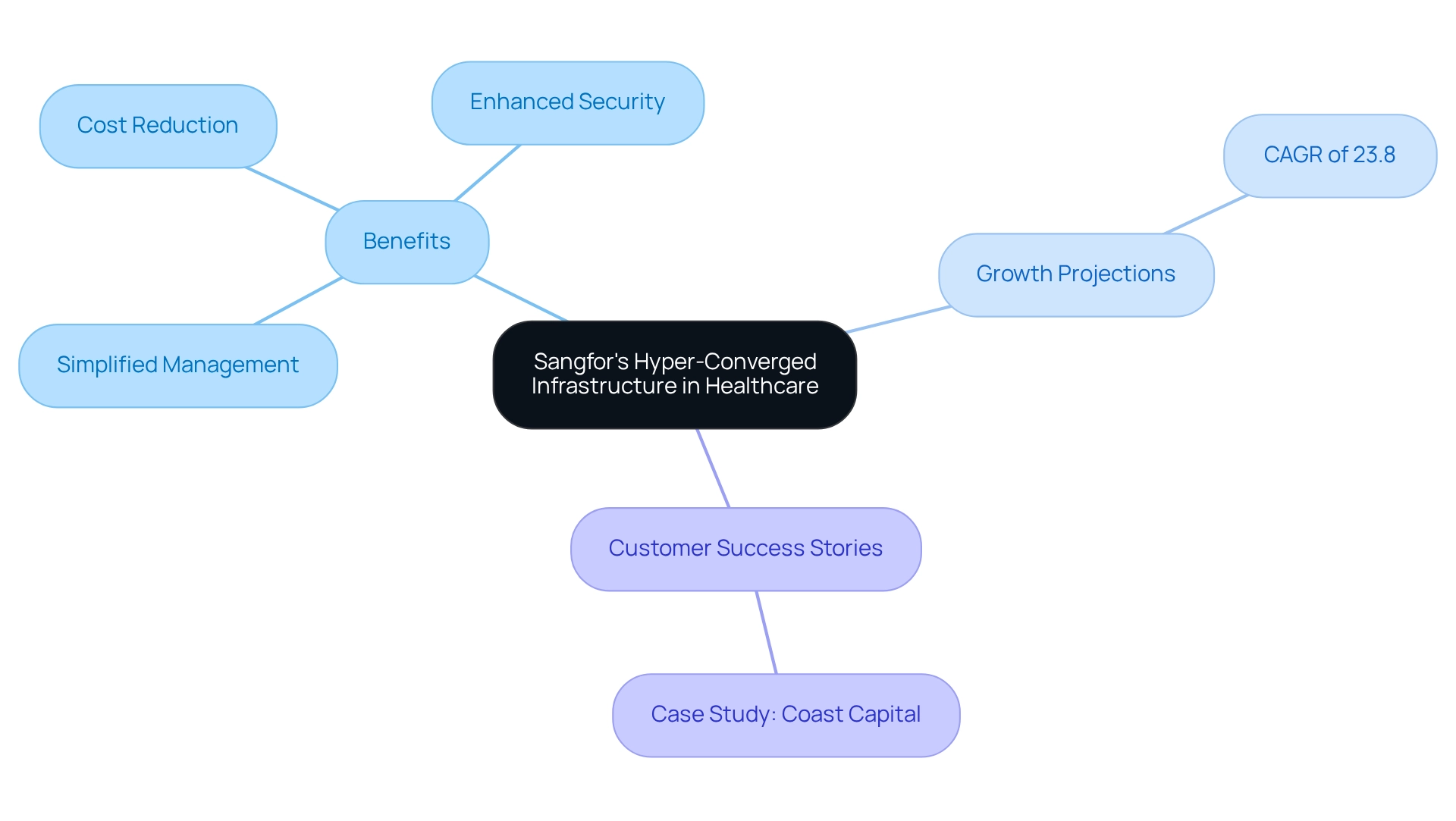
National Cyber Resiliency Standards: Safeguarding Patient Data in Healthcare
National Cyber Resiliency Standards serve as a critical framework for us, the medical entities, in our pursuit to safeguard patient information against escalating cyber threats. By adopting these standards, we can significantly bolster our cybersecurity posture, ensuring that sensitive information remains protected from breaches. The urgency of this need is underscored by a staggering 93% increase in breaches within the medical field from 2018 to 2023, with 51% of financial executives in our sector indicating that privacy violations represent a greater threat in 2024 compared to the previous year. This growing concern among financial leaders emphasizes our critical need for robust cybersecurity measures.
As Steve Morgan, Editor-in-Chief, observes, ‘Cybercriminals are exploiting hospitals and medical practices centered on COVID-19,’ further highlighting the vulnerabilities we face. Adhering to these standards not only shields patient information but also helps us avoid the significant penalties associated with data breaches. For instance, entities that have implemented advanced cybersecurity measures, including AI and automation, have been able to detect and contain incidents 98 days faster than average, yielding nearly $1 million in savings on incident response costs. This illustrates the effectiveness of integrating robust cybersecurity frameworks, which can be facilitated by the National Cyber Resiliency Standards.
Furthermore, fostering a culture of safety within our medical institutions is vital. Regular training and updates on cybersecurity practices for all staff members are essential to maintain vigilance against potential threats. Collaboration across sectors is also crucial; we are encouraged to share expertise and contribute to building a more resilient future in cybersecurity. As the landscape of cyber threats continues to evolve, the application of National Cyber Resiliency Standards will be pivotal in protecting individual information and enhancing the overall resilience of our medical systems.
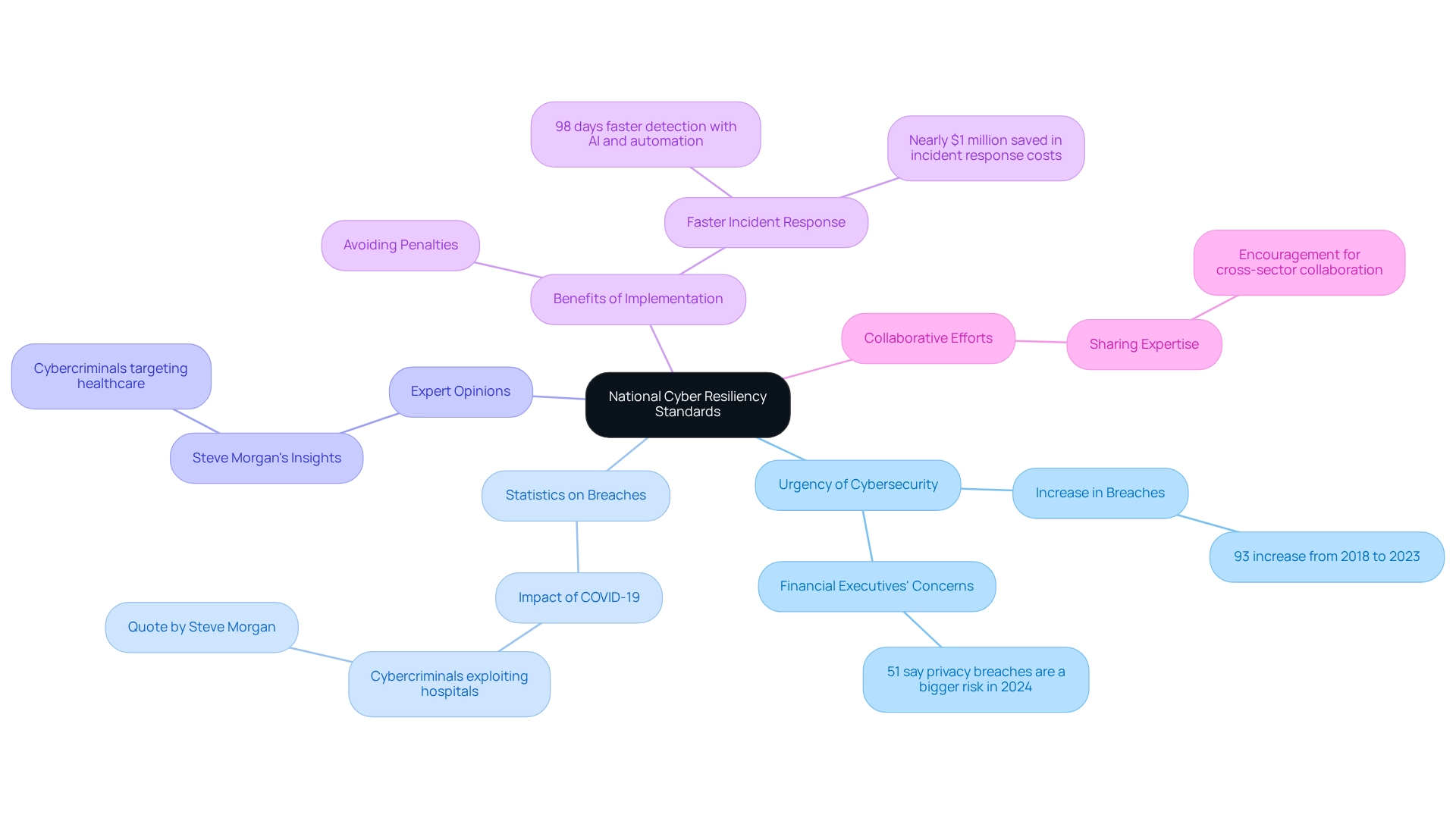
HealthCareCAN: Strategies for Modernizing Healthcare Infrastructure
We advocate for a comprehensive strategy to modernize IT infrastructure in healthcare, emphasizing the necessity of significant investments in technology and training. Central to our strategy is the implementation of compatible systems within the IT infrastructure in healthcare that facilitate seamless information sharing across platforms, which is crucial for enhancing care quality and operational efficiency. Notably, 55% of health systems in the U.S. are projected to increase their spending on interoperability by 5 to 20 percent in 2023 compared to the previous year, indicating a growing recognition of its importance for IT infrastructure in healthcare.
Investing in cloud solutions represents another pivotal strategy, providing scalability and flexibility that traditional systems cannot offer. This transition not only addresses the rising demands for precision medicine and accommodates greater patient volumes but also mitigates the ongoing shortages of medical professionals through improved efficiency. Our hybrid integration platform plays a vital role in transforming IT infrastructure in healthcare, equipping organizations with the tools necessary to simplify disparate systems and enhance data accessibility, ultimately empowering them to future-proof their operations. We offer specific services such as enterprise architecture and project management, which are essential for the effective implementation of these strategies.
Moreover, ensuring that all staff are adequately trained in new technologies is imperative for maximizing the benefits of these investments. Engaging stakeholders throughout the modernization process of IT infrastructure in healthcare ensures that the diverse requirements of all parties are considered, fostering a more inclusive and effective transition. Dr. Ateev Mehrotra emphasizes that innovations enabling immediate care access substantially enhance experiences for individuals.
Successful case studies, such as Koru’s transformation of complex products, demonstrate how strategic design and user-centered approaches can simplify medical technology, ultimately boosting user engagement and satisfaction. Koru’s strategies specifically highlight the enhancement of interoperability in the IT infrastructure in healthcare, which is vital for effective data sharing and improved health outcomes. By prioritizing these strategies, medical institutions can significantly elevate their operational capabilities and care delivery by enhancing IT infrastructure in healthcare for individuals.
Furthermore, entities must navigate challenges such as resistance to change and the integration of new systems, making these investments even more critical. Our partnerships with managed service providers further strengthen these efforts, ensuring a collaborative approach to digital transformation.
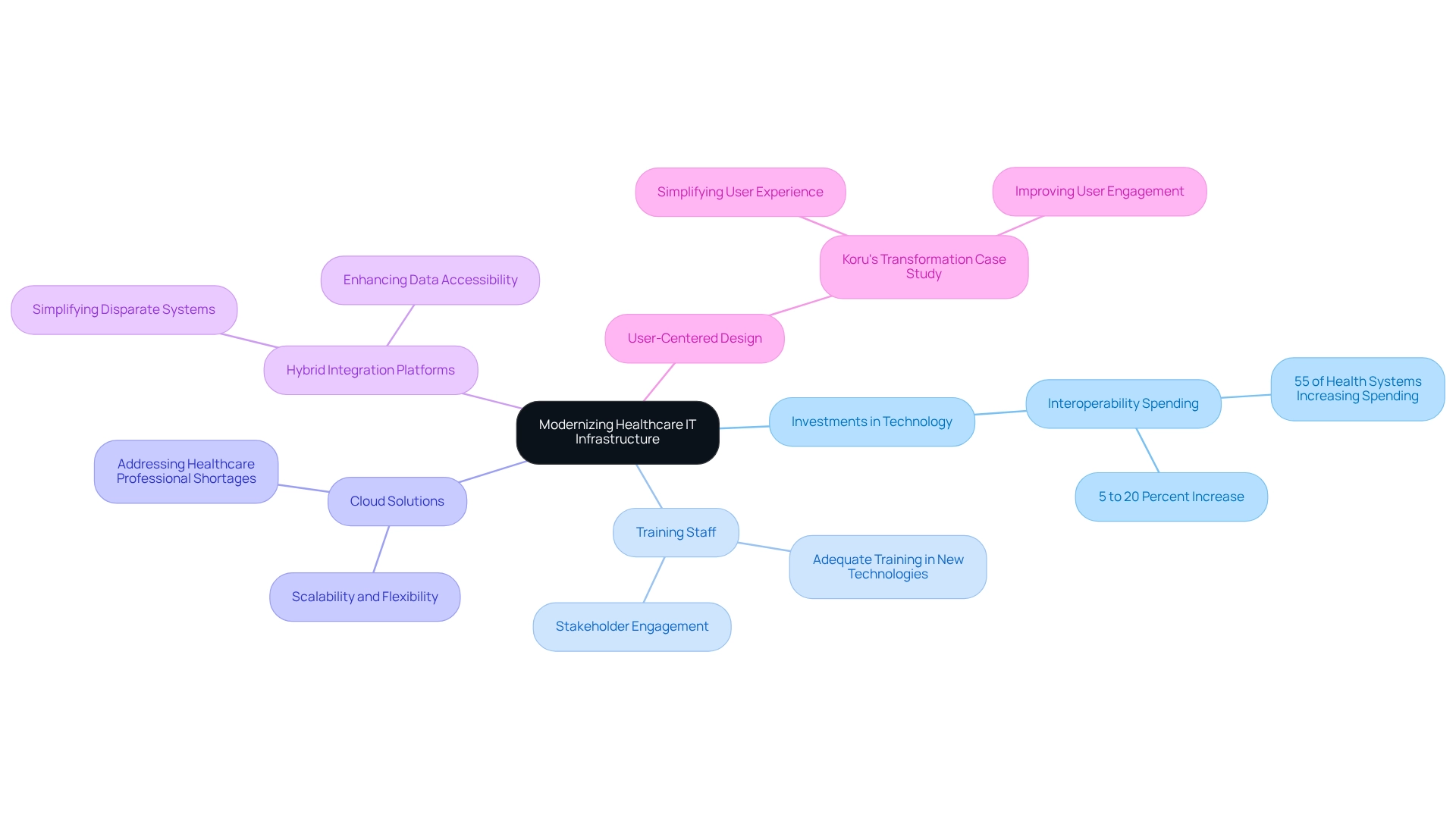
Accelerate Healthcare Projects: Leveraging Digital Tools for Better Patient Care
Digital tools, such as telemedicine platforms, electronic medical records (EHRs), and client management systems, are pivotal in accelerating medical projects by streamlining processes and enhancing communication. We recognize that the adoption of these technologies allows medical organizations to significantly decrease wait times, enhance engagement, and improve overall care quality. For instance, telemedicine enables remote consultations, thus enhancing accessibility for individuals who may encounter obstacles to in-person visits. Furthermore, EHRs improve data management, ensuring that medical providers have prompt access to critical information, which is vital for informed decision-making.
The rise of telemedicine has been particularly noteworthy, with a reported 44% increase in adoption rates from 2015 to 2019, prior to the pandemic. This trend has persisted, as individuals who utilized telemedicine during the pandemic expressed satisfaction levels similar across various demographics, highlighting its effectiveness in maintaining care quality. Telemedicine is anticipated to continue being an important aspect of medical service delivery in the future, thereby strengthening its significance in the modernization of IT infrastructure in healthcare.
Moreover, the integration of advanced technologies such as artificial intelligence (AI) and virtual reality (VR) is transforming healthcare by humanizing interactions and enhancing treatment outcomes. For instance, AI-driven solutions can provide personalized health advice, while VR applications have shown promise in pain management and mental health treatment, offering immersive experiences that can alleviate discomfort and facilitate recovery. Significantly, instances from the Interface Summit, including the application of AI avatars to assist veterans with PTSD and VR tools for pain management, demonstrate the potential of these technologies to enhance patient experiences and improve data accessibility, enabling providers to make informed choices based on thorough patient histories.
However, challenges remain; many clinicians initially hesitated to embrace telehealth due to concerns about care quality and personal connection. A significant portion of family medicine providers cited inefficiency and lack of training as barriers to telehealth use. The pandemic has prompted some adaptation, yet ongoing training and support are vital for enhancing telehealth adoption among medical providers. As we note, “Avato has the ability to simplify complex projects and deliver results within desired time frames and budget constraints,” which underscores the importance of leveraging digital tools effectively.
As we approach 2025, the incorporation of these digital tools will be crucial in shaping a more efficient and accessible medical landscape, offering actionable insights for IT managers in the banking sector to contemplate in their own modernization efforts. Additionally, a future with open information where individuals have control over their health records is crucial for achieving the full potential of these digital transformations.
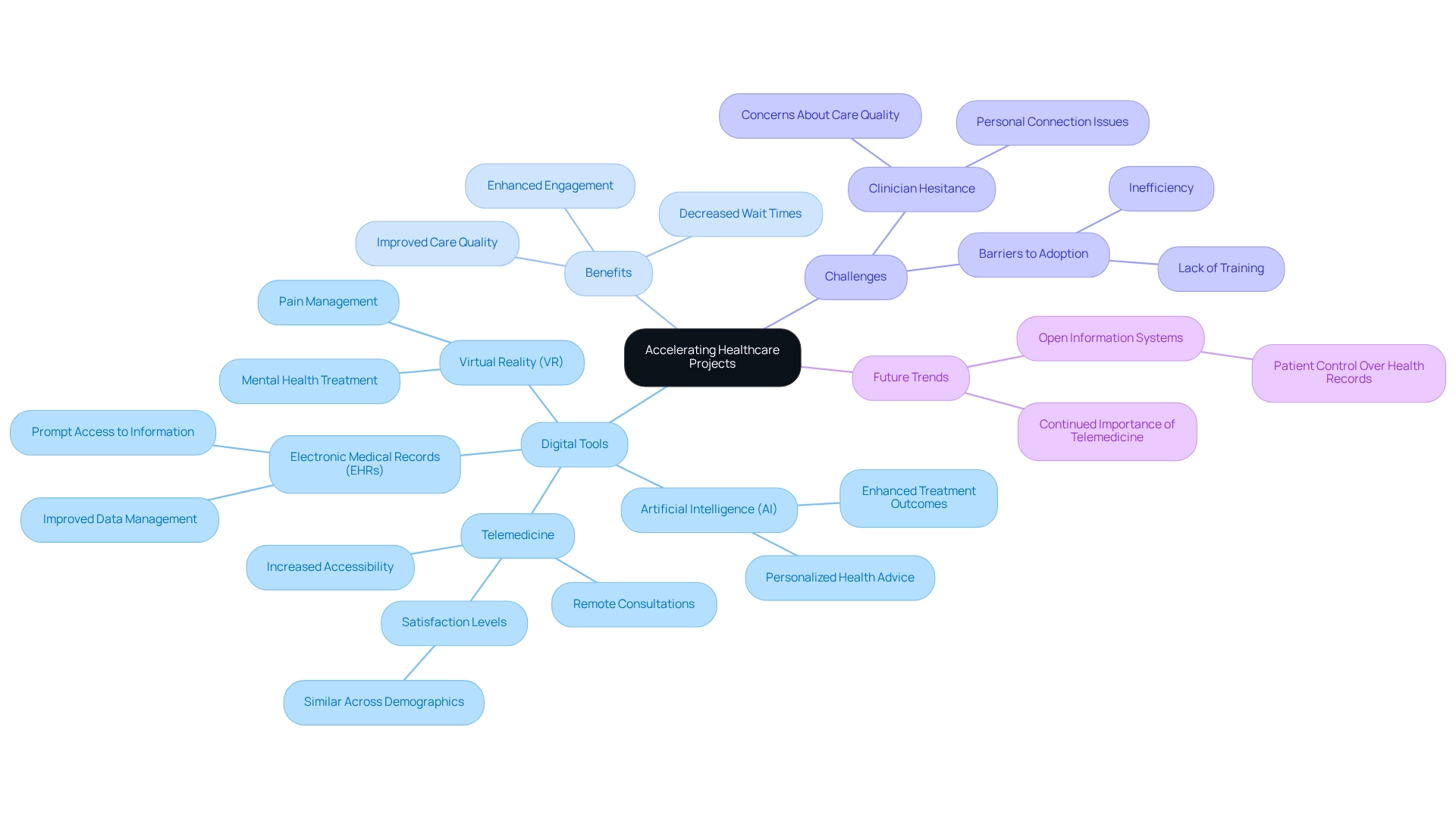
Regulatory Compliance: Ensuring Safe and Efficient Healthcare IT Operations
Regulatory compliance in medical IT is not just important; it is essential for protecting individual information and adhering to legal standards. We must implement comprehensive information protection measures, conduct regular audits, and ensure that all personnel receive thorough training on compliance protocols. Investing in comprehensive training programs is vital to ensure our staff is comfortable with the new platform and understands the compliance requirements. By prioritizing these practices, we not only safeguard sensitive patient information but also mitigate the risk of legal consequences and foster trust among patients. Furthermore, adherence to these standards cultivates a culture of responsibility and openness, which is indispensable in today’s medical environment.
As we approach 2025, the emphasis on information protection measures is intensifying, with numerous entities transitioning from manual compliance procedures to automated solutions. This shift not only enhances cybersecurity but also reduces costs associated with breaches. For instance, entities leveraging automated compliance technologies have reported decreased expenses linked to information incidents, underscoring the efficiency of such measures in maintaining regulatory standards.
Statistics reveal that 64% of medical facilities plan to enhance their training on ethics and compliance in the coming years, reflecting a growing recognition of the importance of these initiatives in protecting client information. Additionally, 33% of compliance teams in the medical sector anticipate expansion in the next year, which can lead to improved regulatory adherence and stronger IT operations. By adopting these strategies, including effective staff training and change management, we can significantly bolster our IT infrastructure in healthcare while ensuring the safeguarding of individual data and compliance with evolving regulations.

Coordinated Care Programs: Enhancing Patient Outcomes Through Collaboration
Coordinated care programs are vital in fostering collaboration among healthcare providers, ensuring individuals receive comprehensive and continuous care. By integrating services across various specialties, we effectively address the diverse needs of individuals, leading to improved outcomes and enhanced overall experiences. A study reveals that care coordination efforts average 2.3 hours per child each month, underscoring the significant commitment required to elevate care and the potential benefits of investing in coordinated assistance, with a particular emphasis on improving IT infrastructure in healthcare.
Furthermore, the adoption of technological solutions, such as shared electronic health records and innovative digital medicine methods, is essential in strengthening these programs. Technologies like virtual reality (VR) and artificial intelligence (AI) not only facilitate communication among providers but also enhance the personalization of care. For instance, AI applications like the virtual avatar Nadia can deliver tailored information about treatments, while VR solutions such as SimCoach can significantly mitigate pain perception during medical procedures, thus enriching experiences.
The evaluation of care coordination measures used in the Medicare CAHPS survey validates their effectiveness as indicators of experience, correlating positively with clinical quality metrics. This evidence reinforces our understanding that effective collaboration among medical providers substantially improves outcomes for individuals, particularly when technology is employed to facilitate these efforts.
As we explore the influence of coordinated care on medical service delivery, it becomes clear that enhancing clinical care quality is paramount. Moreover, the importance of health information accessibility cannot be overstated; empowering individuals with control over their medical data is crucial for discovering new treatment options. As medical services continue to evolve, the integration of technology and teamwork within IT infrastructure in healthcare will remain essential in addressing the complex requirements of individuals and ensuring they receive the finest possible care. As Ashlee J. Vance, PhD, MA, RN, RNC-NIC, aptly observes, such a review is crucial to our understanding of effective medical service delivery and its impact on individual outcomes.
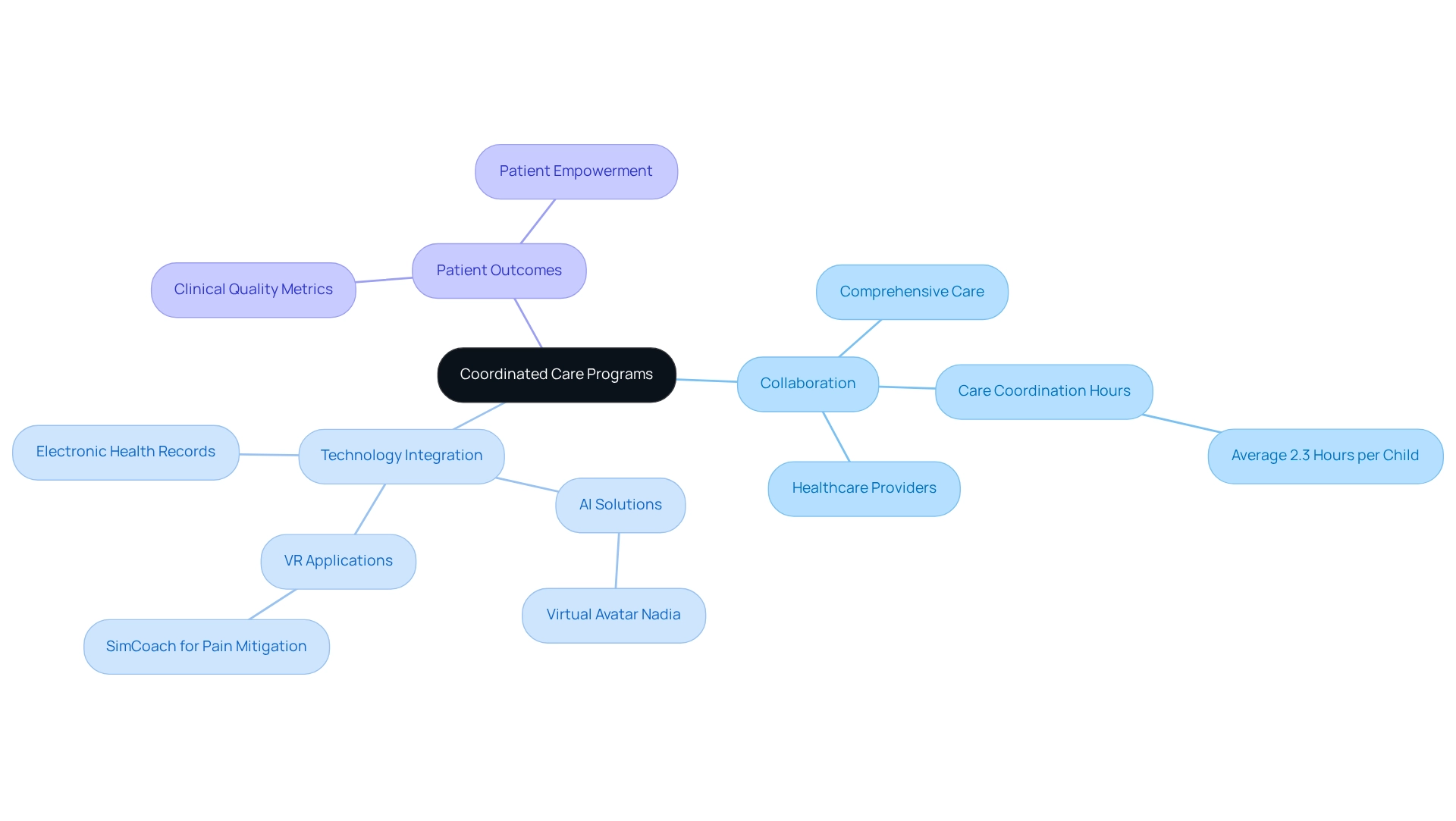
Real-Time Monitoring: Ensuring Quality Care in Healthcare Systems
Real-time monitoring systems empower us as medical practitioners to continuously track individual conditions, enabling timely interventions when necessary. These systems are designed to notify us of any alterations in an individual’s condition, allowing prompt measures to avert complications. By seamlessly incorporating real-time monitoring into the IT infrastructure in healthcare workflows, we can significantly enhance safety and improve overall care quality.
Technologies such as wearable devices and remote monitoring tools play a pivotal role in this process, delivering critical data that informs our clinical decisions. The advancements in digital medicine, particularly through the application of artificial intelligence (AI) and virtual reality (VR), further humanize care by providing innovative treatment options that decrease reliance on pharmaceuticals and minimize side effects.
With 63% of the U.S. population using fitness trackers, the impact of these devices on individual safety is profound, as they offer continuous insights into health metrics. The remote health monitoring market is anticipated to expand from USD 1.45 billion in 2021 to USD 4.07 billion by 2030, indicating a compound annual growth rate (CAGR) of 8.74%. This underscores the growing significance of ongoing monitoring of individual health status.
However, challenges such as technological barriers and the need for reliable internet connections must be addressed to ensure the widespread adoption and effectiveness of IT infrastructure in healthcare. A case study titled ‘Challenges of Remote Health Monitoring’ highlights that despite the advantages, addressing these challenges is crucial for the widespread adoption and effectiveness of remote health monitoring solutions. By overcoming these obstacles, we can leverage real-time monitoring systems, supported by AI and VR technologies, to deliver higher quality care and enhance patient outcomes.
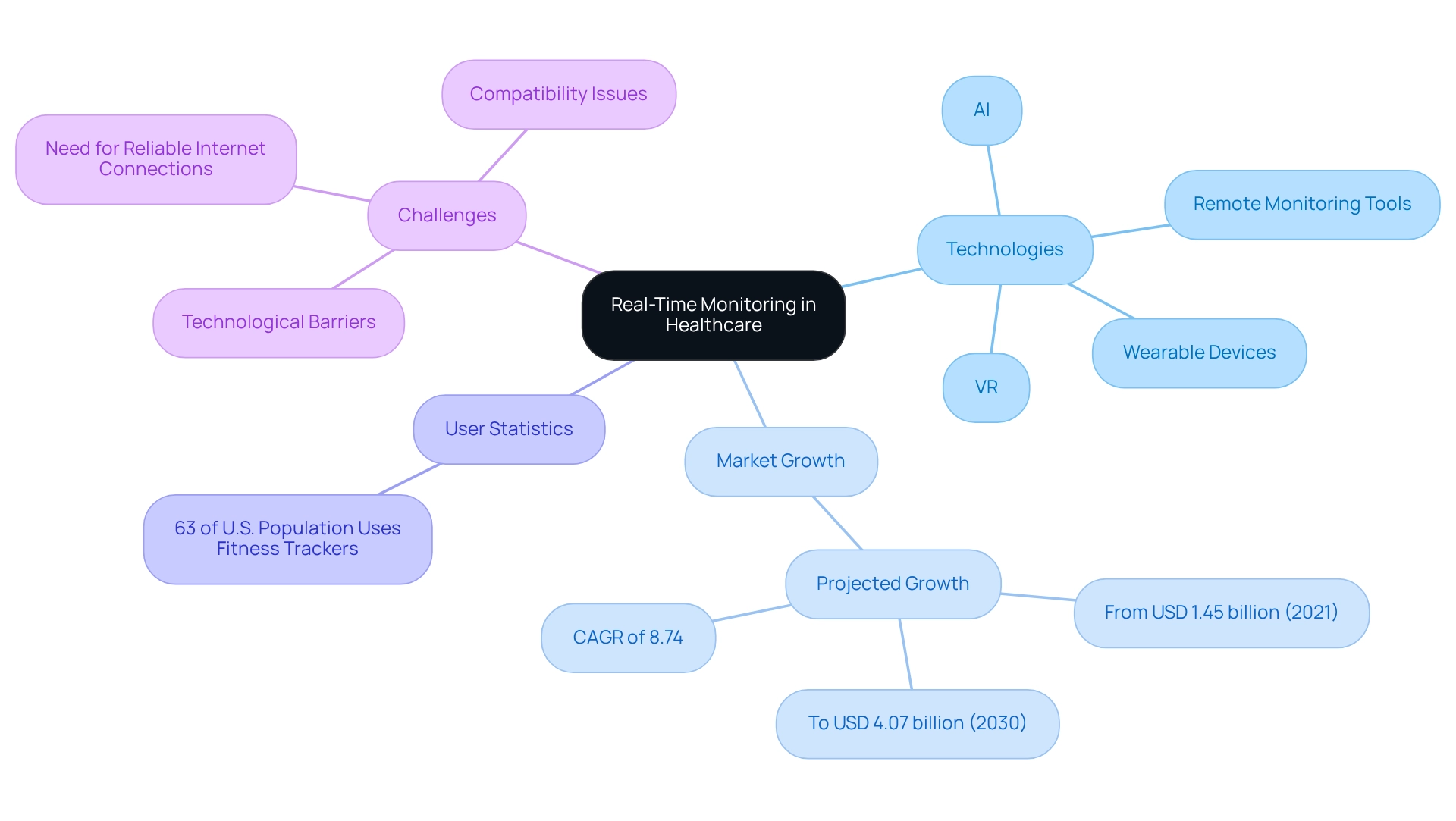
Transforming Legacy Systems: Solutions for Modern Healthcare Integration
Transforming legacy systems is not just beneficial; it is essential for medical organizations striving to enhance interoperability and streamline operations. We are dedicated to solving complex integration challenges. By implementing solutions such as:
- Phased upgrades
- Cloud migration
- Modern integration platforms like our hybrid integration platform
we enable a smooth transition from outdated technologies to more efficient systems. In 2023, the FBI’s Internet Crime Complaint Center reported 2,825 ransomware complaints, leading to over $59.6 million in losses. This stark reality underscores the significant security risks posed by legacy systems. These obsolete technologies not only heighten susceptibility to breaches but also obstruct adherence to changing regulations, making modernization crucial. By modernizing the IT infrastructure in healthcare, we can significantly improve information sharing, enhance patient care, and reduce operational costs. Alarmingly, only 10% of firms have effectively enhanced company-wide information access in recent years. This emphasizes the urgency for medical entities to tackle their legacy systems. Successful case studies show that organizations prioritizing the replacement or upgrade of legacy systems can achieve substantial improvements in operational efficiency and data accessibility. As medical technology continues to evolve in 2025, embracing these modernization strategies, including leveraging our dedicated hybrid integration platform, will be essential for maintaining a competitive edge and delivering quality care.
So, what’s holding your team back? We encourage healthcare organizations to start by assessing their current systems and identifying integration opportunities that we can facilitate, ensuring a more secure and efficient IT infrastructure in healthcare while future-proofing their operations.
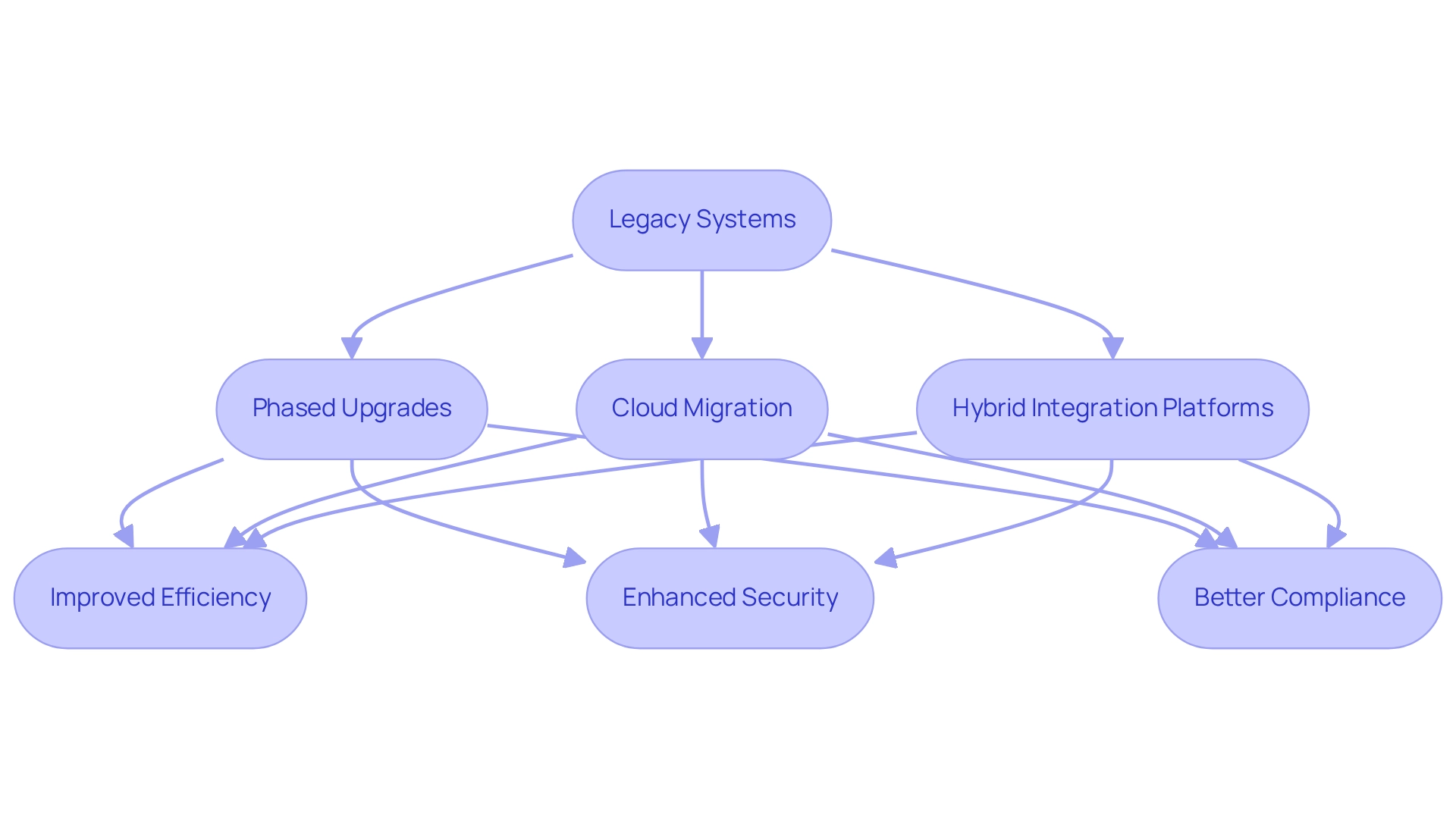
Conclusion
The integration of advanced technologies in healthcare is not merely a trend; it is an essential requirement for enhancing patient care and operational efficiency. We believe that Avato’s hybrid integration platform exemplifies how effective data management can connect disparate systems, streamline workflows, and improve real-time monitoring of patient conditions. By ensuring data accessibility and security, our platform addresses critical challenges such as interoperability and cybersecurity, which are paramount in today’s healthcare landscape.
Investments in robust integration solutions and cloud technologies are crucial for healthcare organizations seeking to modernize their infrastructure. The projected growth of the healthcare IT sector underscores the urgency for organizations to adopt scalable solutions that can adapt to evolving data requirements. Furthermore, the implementation of National Cyber Resiliency Standards and coordinated care programs illustrates the importance of safeguarding sensitive information while enhancing collaborative efforts among healthcare providers.
As the industry continues to evolve, leveraging digital tools such as telemedicine, EHRs, and AI-driven solutions will be pivotal in shaping a more efficient and accessible healthcare environment. By prioritizing modernization strategies and fostering a culture of compliance and security, we can significantly improve patient outcomes and ensure that healthcare organizations are well-equipped to meet the demands of the future. Our commitment to integrating advanced technologies will ultimately lead to a healthcare system that is not only more effective but also patient-centered, paving the way for better health outcomes across the board.

